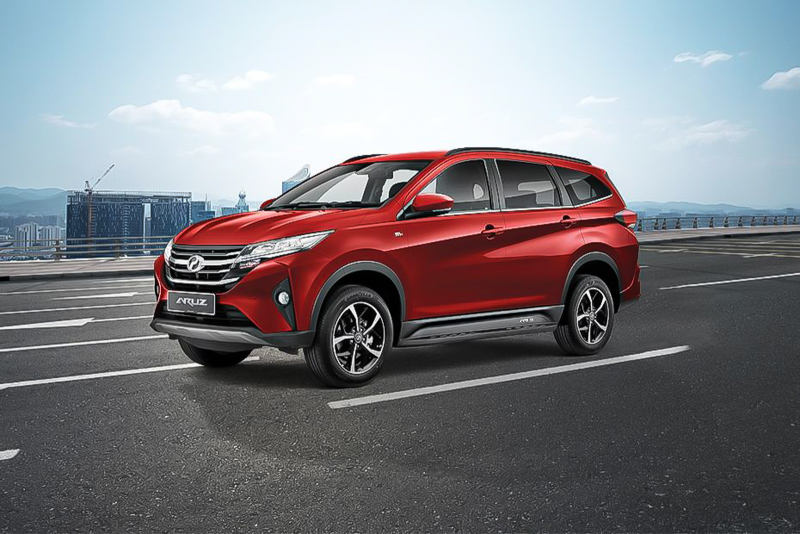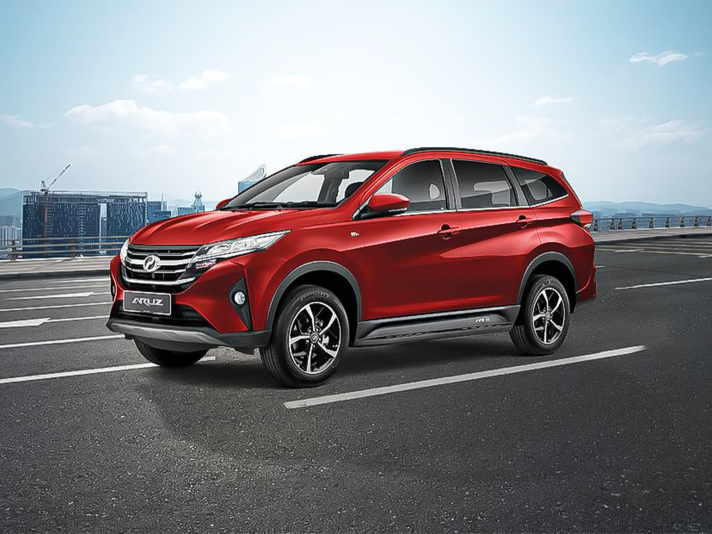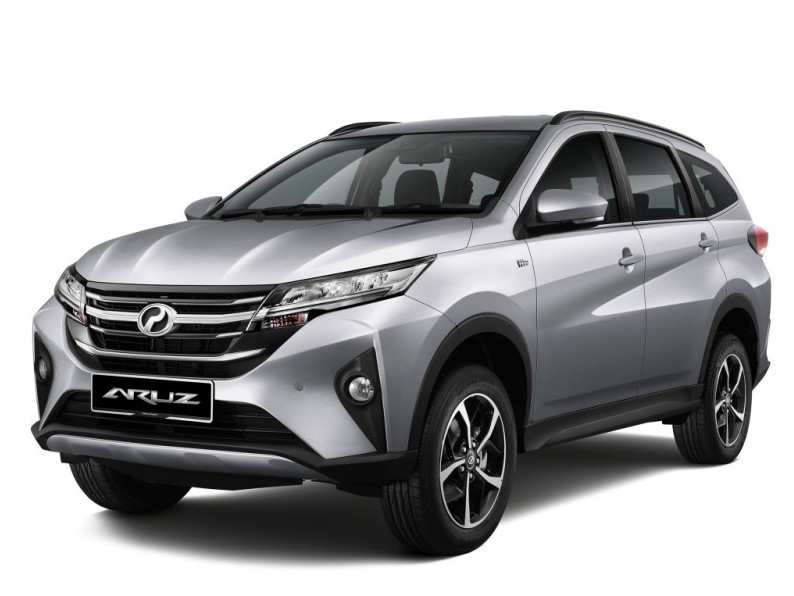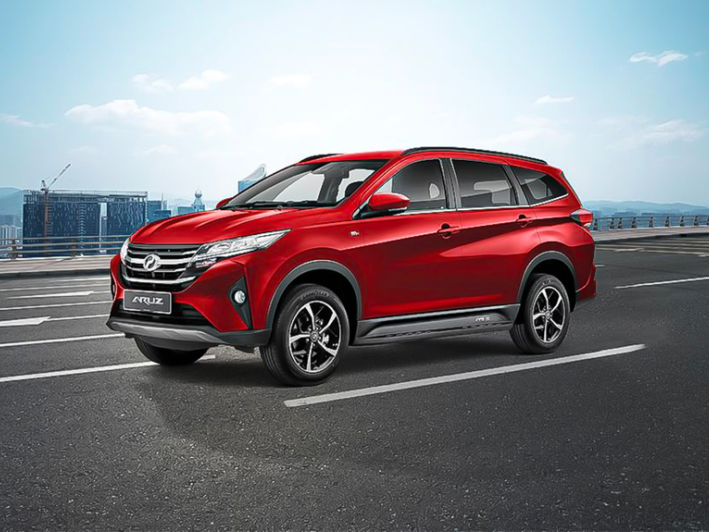Q
Is perodua aruz powerful?
The "Ora Good Cat" you're asking about is an electric vehicle from Great Wall Motors' Ora brand. It's all about sleek styling and city-friendly commuting, and it's been turning heads in Malaysia too. What really makes this car stand out is its retro-futuristic design – think smooth, rounded lines paired with those distinctive oval headlights. Inside, it's got a two-tone interior and a nice big touchscreen. With a range of around 400km (NEDC standard), it's perfect for zipping around town day-to-day.
If you're a Malaysian considering an EV, keep an eye on charging infrastructure. Major cities like KL and Penang have a decent number of charging stations these days, but you'll still want to plan your route carefully for longer trips. In the same price bracket, models like the BYD Dolphin or Neta V are worth checking out too. My advice? Test drive a few and see which one fits your needs best.
The government's currently offering incentives for EVs, like import tax breaks and road tax discounts – definitely worth checking out the latest policies before you buy. EVs usually cost less to maintain than petrol cars, but battery life can be affected by the climate. With Malaysia's hot and humid weather, it's a good idea to get the battery checked regularly.
Special Disclaimer: This content is published by users and does not represent the views or position of PCauto.
Related Q&A
Q
What are the colors of Aruz 2019?
The 2019 Perodua Aruz comes with a variety of color options, including Solid White, Metallic Silver, Metallic Dark Grey, Metallic Delima Red, and Pearl Delima White. These choices should cater to different consumers' aesthetic preferences. As a 7-seater SUV, the Aruz doesn't just offer plenty of colors – its design also focuses on practicality and family needs, with a spacious interior and flexible seating arrangement that's perfect for family trips. Color isn't just about looks; it also affects resale value and daily maintenance. For example, lighter colors reflect more sunlight in hot weather, keeping the interior cooler, while darker shades might need more frequent cleaning to stay looking good. Plus, the Aruz's metallic and pearl paint finishes are generally more durable and visually appealing than regular solid paint, though they might cost more to maintain. When picking a color, besides personal taste, it's worth considering the local climate and how you'll use the car to keep it in great shape for years to come.
Q
How many km per liter is Aruz?
The actual measured fuel consumption of the Aruz is 22 liters per 100 kilometers. After conversion, the vehicle can travel approximately 4.55 kilometers per liter. Its official combined fuel consumption is 6.41 liters per 100 kilometers, meaning it can travel about 15.6 kilometers per liter.
In actual driving, the vehicle's fuel consumption is affected by various factors such as driving style, road conditions, and vehicle load. The specific kilometers traveled per liter may vary. For example, situations like rapid acceleration, sudden braking, and long-term traffic jams will increase fuel consumption, and the kilometers traveled per liter will decrease accordingly. On the other hand, good driving habits such as smooth driving and maintaining an appropriate speed can help improve fuel economy and increase the kilometers traveled per liter.
Q
Is Aruz ladder frame?
The Perodua Aruz features a monocoque chassis instead of a ladder frame. This design, commonly found in modern SUVs, offers better road-driving stability and riding comfort. At the same time, it reduces the vehicle's weight to improve fuel efficiency. As a 7-seat SUV targeting family users, the Aruz's monocoque structure is more suitable for daily urban commuting and long-distance travel, balancing spatial practicality and handling flexibility.
It's worth noting that ladder frames are mostly used in hardcore SUVs or pickups that emphasize off-road capabilities, such as the Toyota Hilux. These vehicles are characterized by strong torsional resistance and easy maintenance, but they offer poor comfort on the road. When Malaysian consumers choose a vehicle, they can make a decision based on their own needs. If the vehicle is mainly for urban use, a monocoque chassis is more appropriate. If they often encounter rough terrains, ladder-frame vehicles have more advantages.
As a local brand, Perodua has fully considered the road conditions in Malaysia and users' habits in the design of the Aruz. Its chassis tuning not only ensures comfort but also allows it to handle light unpaved roads.
Q
What kind of engine is in Perodua Aruz?
The Perodua Aruz is equipped with a 1.5-liter Dual VVT-i naturally aspirated gasoline engine, coded as 2NR-VE. This engine is provided by Perodua's partner, Toyota. It adopts the Dual Variable Valve Timing-intelligent (Dual VVT-i) technology, which can optimize fuel efficiency and power output. The maximum power is 77 kilowatts (104 horsepower), and the peak torque is 136 Nm. It is paired with a 4-speed automatic transmission or a 5-speed manual transmission, suitable for daily urban driving and light off-road needs. This engine has shown stable performance in the Malaysian market and is favored by consumers for its reliability and low maintenance cost. The Dual VVT-i technology improves combustion efficiency, reduces fuel consumption, and at the same time cuts emissions by adjusting the opening times of the intake and exhaust valves, meeting environmental protection standards. For Malaysian consumers, the engine configuration of the Aruz offers high cost-effectiveness among similar models, especially suitable for family use, balancing power and economy. Moreover, compared with turbocharged engines, naturally aspirated engines have a simpler structure and lower maintenance costs, making them a great choice for users who value practicality.
Q
How much is a Perodua Aruz battery?
The battery price of the Perodua Aruz usually ranges between RM200 and RM400, specifically depending on the battery brand, model, and where you purchase it. The price of the original-factory battery will be slightly higher, while third-party brands like Bosch, Amaron, or Century may offer more cost-effective options. It is recommended that car owners choose a battery with specifications that match their vehicle when replacing the battery. For example, common models such as 44B20L or 55D23L can ensure compatibility and performance.
In addition, regularly checking the battery status and keeping the charging system operating normally can extend the battery life. Generally, the lifespan of a car battery is around 2 to 3 years, but the actual usage time will be affected by driving habits and climatic conditions. If you find it difficult to start the vehicle or the lights are dimming, it may be a sign of battery aging, and you should check or replace it in time.
In Malaysia, many car repair centers or battery specialty stores offer free testing and installation services. Before making a purchase, you can compare the prices and services of several stores to get the most suitable solution.
Q
Which country made Perodua Aruz?
The Perodua Aruz is manufactured by Perodua, a local Malaysian automotive brand. It's a seven-seat SUV specifically designed for the Malaysian market. Since its launch in 2019, it has won the favor of many family users thanks to its spacious interior and practicality. As a Made-in-Malaysia vehicle, the Perodua Aruz is assembled locally, which shows Perodua's emphasis on meeting the needs of Malaysian consumers. Its design and functions are optimized for Malaysian road conditions and family use. For instance, the high ground clearance makes it suitable for rural roads, and the fuel-efficient 1.5L Dual VVT-i engine takes into account daily economy.
It's worth mentioning that Perodua, as the second-largest car manufacturer in Malaysia, has long-term partnerships with Japanese automakers Toyota and Daihatsu. So, it has advantages in technology sharing and quality control. The Aruz incorporates some proven technologies from its partners. For example, it shares the platform with the Toyota Rush, but the configuration and pricing strategies are adjusted for the Malaysian market, making it a highly cost-effective choice.
For Malaysian consumers who value practicality and budget, the Aruz offers a solution that meets local needs. At the same time, it also demonstrates the progress of local cars in R & D and manufacturing.
Q
Is Aruz 6 seater?
The Perodua Aruz is a 7-seater SUV designed for family use, featuring a 2+3+2 seat layout. So, strictly speaking, it's not a 6-seater model. However, if you fold the third-row seats, it can be transformed into a 5-seater configuration. This vehicle is equipped with a 1.5L Dual VVT-i engine paired with a 4-speed automatic transmission, focusing on economic practicality and high cost-effectiveness. Its width of 2,025mm and length of 4,075mm offer relatively spacious seating space, which is especially suitable for the medium-and short-distance travel needs of multi-member families in Malaysia.
It's worth noting that 7-seater models are quite popular in the Malaysian market, mainly due to the local family structure and usage habits. Compact SUVs like the Aruz combine the flexibility of urban commuting and the convenience of occasional passenger-carrying. When consumers are making a purchase, they can compare the space utilization differences with similar models in the same class, such as the Proton X70 or the Toyota Rush. At the same time, it is recommended to take a test drive to experience whether the legroom in the third row meets your needs, as the vehicle's size directly affects the comfort during long-distance rides.
Q
Is Perodua Aruz an MPV?
The Perodua Aruz is indeed classified as a compact MPV (Multi-Purpose Vehicle). It's built on the Toyota Rush platform and features a three-row, seven-seat layout, making it suitable for families or consumers who need more passenger space. The Aruz's body dimensions and relatively high ground clearance also endow it with certain SUV characteristics. However, its official positioning still focuses on MPV functionality, emphasizing practicality and space flexibility.
In the Malaysian market, the Aruz has become the top choice for many families, thanks to Perodua's brand advantage of high cost-effectiveness and low maintenance costs. MPV models are particularly popular locally because they can meet both daily commuting and weekend family travel needs. The Aruz is also equipped with safety features such as the ASA (Advanced Safety Assist) driving assistance system, which further enhances its competitiveness.
If users are considering an MPV but occasionally need to tackle light unpaved roads, the Aruz's crossover design is a better fit than traditional MPVs. However, it should be noted that the third-row space is more suitable for children or short-distance rides. When Malaysian consumers are choosing a car, they can comprehensively consider factors like the number of seats, fuel consumption (the Aruz is powered by a 1.5L Dual VVT-i engine), and their budget. They can also compare it with models in the same class, such as the Proton Exora or Toyota Avanza. Ultimately, the choice depends on personal needs and preferences.
Q
What kind of gearbox is Perodua Aruz?
The transmission types of Perodua Aruz vary across different model years. For models produced between 2019 and 2021, the transmission type is AT (4-speed electronically controlled automatic transmission system E-AT). This type of transmission has a relatively complex internal structure. It uses planetary gears to achieve speed changes and torque conversion, which results in higher R & D and production costs. However, it offers good shifting comfort, reliability, and durability.
As for the 2023 Aruz model, the transmission type has been upgraded to CVT. A CVT transmission enables the vehicle to shift gears smoothly during driving, providing a better driving experience. Moreover, it can help improve fuel economy to a certain extent.
Q
When was Aruz launched?
The Perodua Aruz is a seven-seater SUV officially launched in the Malaysian market on January 15, 2019. As the first model of the Perodua brand built on the DNGA (Daihatsu New Global Architecture) platform, it targets the family user market, offering spacious seating and practical functionality.
The Aruz is equipped with a 1.5-liter dual VVT-i naturally aspirated engine, paired with a 4-speed automatic transmission, delivering affordable fuel performance. At the same time, it comes with advanced safety features such as the ASA 2.0 (Advanced Safety Assist) system, which includes functions like pre-collision warning and lane departure warning, making it suitable for family users who prioritize safety.
The launch of this vehicle has enriched Perodua's product line in the SUV market. It competes with models like the Honda BR-V and Proton X70 but attracts consumers with a more affordable price and lower maintenance costs.
The Aruz has received a positive response in the Malaysian market and has become one of the top choices for many families. Its durability and practicality are widely recognized, making it suitable for Malaysia's diverse road conditions and family travel needs.
Popular Cars
Model Year
Car Compare
Car Photo
Latest Q&A
Q
How powerful is 2 horsepower?
2 horsepower converts to approximately 1491.4 watts (or 1.4914 kilowatts) in the International System of Units. From a practical experience perspective, 1 horsepower is equivalent to the power output required to carry a 10-kilogram load and run 100 meters in 13 seconds. Therefore, the intensity of 2 horsepower is about twice that level—for example, it can carry a 20-kilogram load to complete 100 meters in 13 seconds, or carry a 10-kilogram load to finish the distance in a shorter time. In daily application scenarios, 2 horsepower falls into a relatively small power range, far lower than the typical 100-200 horsepower output of a family car engine. It is commonly found in small mechanical equipment such as some garden pruning tools, small water pumps, or lightweight agricultural auxiliary machinery, which need to continuously output small power to complete specific tasks. It should be noted that there are distinctions between imperial horsepower and metric horsepower, but the imperial horsepower conversion standard is usually adopted by default in daily use.
Q
What is the lifespan of a 2HP motor?
The lifespan of a 2HP motor is influenced by multiple factors such as usage frequency, maintenance practices, operating environment, and motor type. When used correctly under rated conditions and maintained regularly, its average lifespan typically ranges from 10 to 15 years. However, if it operates for a long time in high-temperature, humid, or dusty environments, or runs under frequent overload, its lifespan may be shortened to 5 to 8 years. In practical application scenarios in Malaysia, such as small pumps for automotive auxiliary systems or small industrial drive motors (if they are of 2HP specification), choosing high-quality brand products and following standardized maintenance procedures (such as regular cleaning, checking lubrication, and electrical connections) can effectively extend the service life. Additionally, the manufacturing process and material quality of the motor also affect its lifespan, and products from reputable brands usually have better durability guarantees. It should be noted that timely replacement of worn parts and avoiding long-term continuous overload operation are key measures to maintain the motor in good condition.
Q
How fast does 2 hp go?
The speed corresponding to 2 horsepower varies depending on the vehicle type and design. Taking electric two-wheelers as an example, 1 horsepower is approximately equal to 0.7457 kilowatts. Referring to relevant model data, an electric two-wheeler equipped with a motor of about 2 kilowatts (approximately 2.68 horsepower) can reach a maximum speed of 62 km/h. Therefore, a vehicle with 2 horsepower has a speed roughly ranging from 55 to 60 km/h.
Such vehicles are typically suitable for short-distance urban commuting scenarios. Some models also feature two riding modes: economy and sport. The full-charge range can reach 105 km, and charging from 0 to 80% takes approximately 6 hours. They also come with a 2-year or 20,000-kilometer warranty. Some models may qualify for subsidies under local policies, further improving commuting cost-effectiveness. The design of these vehicles meets urban transportation needs while balancing practicality and convenience.
Q
How many kW are in 2HP?
The result of converting 2HP to kilowatts (kW) varies slightly depending on the type of horsepower: if it is British mechanical horsepower (commonly used in automotive and other fields), 2HP is approximately equal to 1.49kW (accurate value is approximately 1.4914 kW); If it is metric horsepower (also known as horsepower), 2HP is approximately equal to 1.47kW (accurate value is approximately 1.471kW). In practical applications, such as engine power labeling or motor parameters, approximate values are sometimes used to simplify 2HP to 1.5kW for quick reference. Horsepower (HP) and kilowatts (kW) are both units of power. The former originated from measuring mechanical power (such as steam engines and horse pulling force), while the latter is an internationally recognized unit of power standard. The conversion relationship between the two needs to be determined according to specific definitions, and the choice in different scenarios will affect the final conversion result.
Q
What is the power of a 2 hp motor?
The power of a 2 hp motor can be derived through the conversion between horsepower and the international standard unit of power. HP, or horsepower, has two common standards: imperial and metric. 1 imperial HP is approximately equal to 745.7 watts, while 1 metric HP is about 735 watts. When converted using the metric standard, the power of a 2 hp motor is 2 × 735 = 1470 watts (i.e., 1.47 kilowatts); when using the imperial standard, it is approximately 2 × 745.7 ≈ 1491.4 watts (around 1.49 kilowatts). In practical applications, different standards may be adopted in different scenarios, but a common approximation in the industry is that 2 hp is roughly equal to 1.5 kilowatts. Horsepower is a traditional unit of power, often used to describe the output capacity of equipment such as motors and engines. However, in the International System of Units, watts or kilowatts are more recommended as units of power. Therefore, in formal technical documents, horsepower values are usually converted to watts or kilowatts for labeling to ensure the uniformity and accuracy of technical communication. Mastering such unit conversion relationships helps to accurately understand the power output capacity of motors in scenarios such as equipment selection and performance evaluation.
View MoreRelated News

Perodua Aruz Review: A Practical and Safe SUV That Won’t Break the Bank
JamesJul 25, 2025

Perodua Aruz Interior Review: A Practical Cabin Despite Basic Materials
JamesJul 23, 2025

Review: Whether the fashionable exterior and flexible space of Perodua Aruz can become your ideal vehicle?
LienApr 9, 2025

The starting price for the 2021 Perodua Aruz is RM 72,900, and there are two models available
LienJun 14, 2024

Perodua Myvi and Bezza may undergo major upgrades in 2026
LienDec 24, 2025
View More


















Pros
Cons